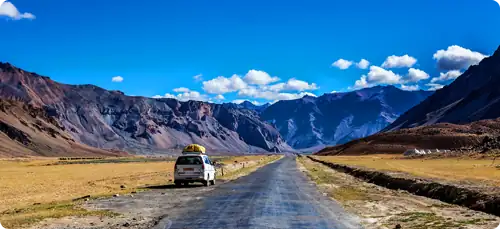Nestled amidst the towering peaks of the Himalayas, Leh Ladakh is a land of breathtaking beauty, rugged terrain, and rich cultural heritage. Over the years, this remote region in the northernmost part of India has witnessed a surge in tourism, drawing travelers from around the globe seeking adventure, spirituality, and an escape into nature’s lap. However, this influx of visitors has brought both opportunities and challenges, prompting a delicate balancing act between preserving the region’s pristine environment and fostering sustainable development.
The Positive Effects:
-
Economic Growth: Tourism has injected vital revenue into the local economy, providing employment opportunities and supporting small businesses such as guesthouses, restaurants, and handicraft shops.
-
Cultural Exchange: Interactions between tourists and locals facilitate cultural exchange, fostering mutual understanding and appreciation for Ladakh’s unique traditions, language, and way of life.
-
Infrastructure Development: The surge in tourism has spurred investment in infrastructure projects like roads, electricity, and telecommunications, improving connectivity and quality of life for residents.
-
Environmental Awareness: Increased exposure to Ladakh’s fragile ecosystem has raised awareness about the importance of conservation among tourists and locals alike, leading to initiatives for responsible tourism and environmental protection.
The Challenges Faced:
-
Ecological Impact: Unregulated tourism poses a threat to Ladakh’s fragile ecosystem, with issues such as waste generation, water scarcity, and habitat degradation endangering the region’s biodiversity.
-
Cultural Erosion: The influx of outside influences and mass tourism can potentially erode Ladakh’s traditional culture and way of life, as commercialization and homogenization creep in.
-
Infrastructure Strain: The rapid increase in tourist numbers strains existing infrastructure, leading to overcrowding, traffic congestion, and pressure on essential services like healthcare and waste management.
-
Seasonal Imbalance: The heavy influx of tourists during peak seasons exacerbates environmental and social pressures, while the off-seasons witness underutilization of resources, creating economic challenges for local businesses.
Striking a Balance:
-
Regulatory Measures: Implementing and enforcing regulations on tourist activities, waste management, and infrastructure development are crucial to mitigate the negative impacts of tourism while ensuring sustainable growth.
-
Community Engagement: Involving local communities in decision-making processes empowers them to safeguard their cultural heritage and natural resources, fostering a sense of ownership and responsibility.
-
Promoting Responsible Tourism: Educating tourists about the importance of respecting local customs, minimizing their ecological footprint, and supporting ethical businesses can encourage sustainable travel practices.
-
Diversifying Tourism: Encouraging alternative forms of tourism such as eco-tourism, adventure tourism, and cultural exchanges can distribute tourist footfall across different regions and seasons, reducing pressure on popular sites.
Conclusion:
The surge in tourism has brought both opportunities and challenges to Leh Ladakh, highlighting the need for a holistic approach to sustainable development. By striking a balance between preservation and progress, Ladakh can continue to enchant travelers with its unparalleled beauty while safeguarding its natural and cultural heritage for generations to come. Through collaborative efforts between government, local communities, and tourists, Leh Ladakh can serve as a shining example of responsible tourism in the Himalayas.


